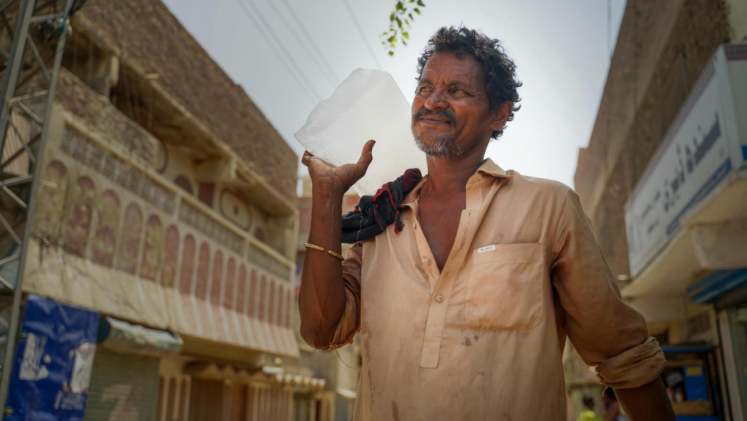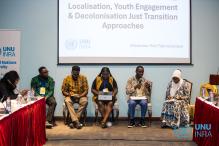Human activities are changing our planet at an incredible rate. Whether by indiscriminately extracting natural resources such as water, degrading our biodiversity and ecosystems or polluting our land and space, humanity continues to move irresponsibly toward a series of risk tipping points. The new Interconnected Disaster Risks 2023 report from UNU-EHS identifies six tipping points that affect our planet. The tipping point for the report’s case study “Unbearable heat” is one that particularly poses a problem for our cities.
Aiming to share some of the findings of this report, UNU-EHS Senior Researcher, Liliana Narvaez, published an opinion piece in El País.
Read the full op-ed in Spanish here. Please find the English translation below.
==
Cities facing unbearable heat
Our daily activities are changing the planet at an incredible rate. Whether by indiscriminately extracting natural resources such as water, degrading our biodiversity and ecosystems or polluting land and space, humanity continues to move irresponsibly toward a series of tipping points. The closer we get to these, the harder they are to avoid.
A new report from the United Nations University identifies six interconnected risk tipping points that we are dangerously close to approaching. If crossed, our cities would no longer be the same. One of the tipping points is called “Unbearable heat.”
During the summer, we heard the negative world records that were broken every month. The World Meteorological Organization confirmed that the Earth experienced the three hottest months on record, and 2023 will most likely be the hottest year on record. Why is this relevant to our cities? Although it is hard to believe, the answer lies within our bodies. The way the human body is designed and the way it consequently processes external stimuli such as temperature and humidity means that we have a limit to how much heat we can withstand without our basic functions being compromised. Unfortunately, with these warming months, we are getting closer and closer to that limit, implying that our health and survival are at risk. Thus, we are approaching a risk tipping point from which there is simply no turning back.
For our cities, the impact of high temperatures represents one of the most significant climate threats we face. Due to a combination of traffic, asphalt and building density, among other factors, cities tend to trap heat in, unlike other spaces, such as green areas, where vegetation normally helps to reduce high temperatures. In our concrete jungles this does not take place. In urban centres the sensation of heat tends to be greater than in the peripheries. Urban centres also tend to be places with massive concentration of workers, many of them involved in outdoor activities without the possibility to shelter indoors or in the shade and without access to adequate ventilation systems that allow them to stay below the maximum heat limit that their bodies can withstand.
Essential jobs such as construction workers, rescuers, truck drivers or public sector professionals such as police and traffic officers are just some examples of people who would have to deal with the worst consequences of unbearable heat, the breaking point of which we approach with every degree of temperature increase.
Is there hope? The answer is yes, although there are no solutions without repercussions. If temperatures continue to rise as they are now, workers in our cities would need to adapt their working hours to times of the day when temperatures are not so high or reduce the number of working hours, both of which would have consequences for the economic sector and society in general. This is already happening in some countries, such as Spain, where companies must adapt the working day in some circumstances.
There is a different strategy in which instead of adapting to or avoiding the consequences of unbearable heat, we focus on attacking the roots of the problem. For example, by collectively creating a different future, one in which we actually work to stop the destruction of our ecosystems and reduce greenhouse gas emissions, two of the deepest roots behind each of those hotter months.
We can still do something to reimagine our future without making the heat unbearable. While the window for action is getting smaller and smaller, we can still act to transform our cities to be simultaneously greener, more resilient and more inclusive to avoid reaching a tipping point.



